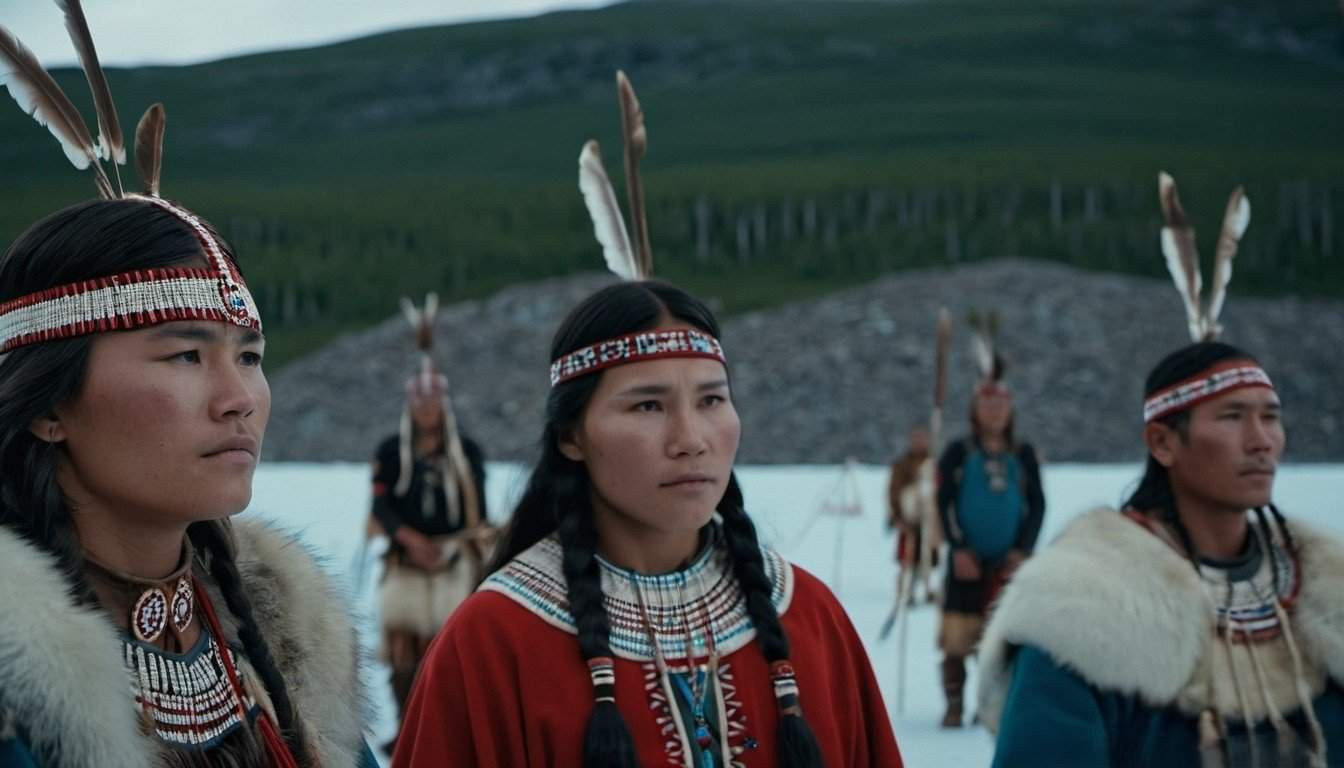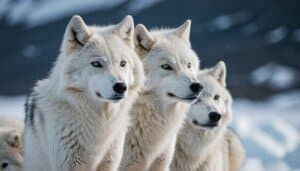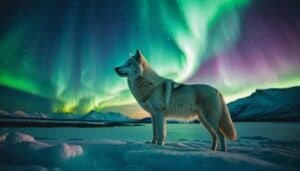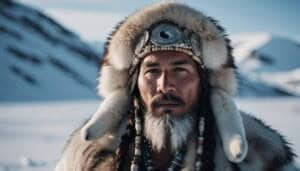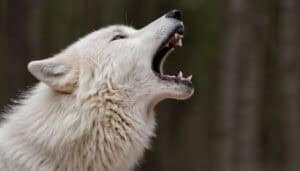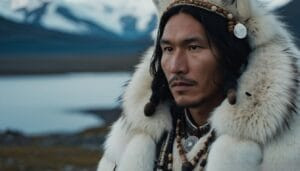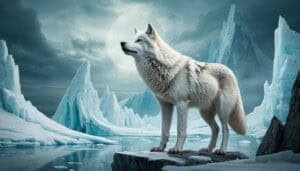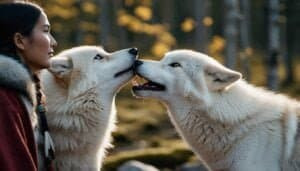Introduction
Arctic rites of passage are significant cultural practices among indigenous peoples in the Arctic region, marking important life transitions. These rites often involve various elements of nature, including the iconic Arctic wolf
In this article, we will explore the multifaceted role of Arctic wolves in these traditions, examining their symbolism, historical significance, and the ways they are integrated into modern-day practices. We will also delve into the interactions between indigenous peoples and Arctic wolves, highlighting rituals, spiritual beliefs, and conservation efforts
Additionally, we will look at the portrayal of Arctic wolves in Arctic art and ceremonies, revealing their deep-rooted presence in folklore and mythology
Introduction To Arctic Rites Of Passage
Arctic rites of passage are ceremonial practices that signify the transition from one stage of life to another within Arctic indigenous cultures
These rites are deeply embedded in the social and spiritual fabric of the communities, reflecting their connection to the natural environment and its inhabitants, including the Arctic wolf
Definition And Importance
Arctic rites of passage refer to various ceremonies and rituals that mark significant life events such as birth, coming of age, marriage, and death. These rites are crucial for maintaining the social order and spiritual well-being of the community
They provide a structured way for individuals to navigate life’s milestones, ensuring that each stage is acknowledged and celebrated within the cultural framework
The importance of these rites lies in their ability to foster a sense of identity and belonging. They reinforce cultural values and traditions, passing them down through generations. For instance, coming-of-age ceremonies often involve tests of endurance and skill, reflecting the community’s reliance on resilience and survival in the harsh Arctic environment.
Key Traditions And Ceremonies
Key traditions and ceremonies vary among different Arctic indigenous groups but share common themes of transition and transformation. Some notable examples include:
Naming Ceremonies: These ceremonies welcome newborns into the community, often invoking the spirits of ancestors and animals, such as the Arctic wolf, to bless and protect the child
Coming-of-Age Rituals: For both boys and girls, reaching puberty is marked by elaborate ceremonies that may include physical challenges, spiritual journeys, and the acquisition of new responsibilities. The Arctic wolf often symbolizes the strength and endurance required to succeed in these rites
Marriage Ceremonies: Marriage unites not just two individuals but two families or clans. These ceremonies often feature symbolic elements drawn from the natural world, with the Arctic wolf representing loyalty and partnership
Death and Mourning Rites: These rites ensure the proper passage of the deceased into the afterlife and provide a framework for the community to express grief and remember the departed. The Arctic wolf may be invoked as a guide for the spirit’s journey
These traditions are not static; they evolve over time, incorporating new elements while preserving core cultural values. The Arctic wolf, as a symbol of the natural world, remains a constant presence, reflecting the enduring bond between the community and its environment
Role Of Arctic Wolves In Indigenous Traditions
Arctic wolves hold a revered place in the traditions and cultural practices of Arctic indigenous peoples. They are seen not only as physical beings but also as spiritual entities that embody various symbolic meanings
The involvement of Arctic wolves in these traditions highlights their integral role in the cultural and spiritual life of the community
Symbolism And Meaning
Arctic wolves symbolize various attributes valued by Arctic indigenous communities, such as strength, endurance, loyalty, and survival
Their ability to thrive in the harsh Arctic environment makes them a powerful symbol of resilience. This symbolism is deeply embedded in the cultural narratives and practices, where the wolf often represents the ideal qualities that individuals are encouraged to emulate
For example, in many coming-of-age ceremonies, the Arctic wolf is used as a metaphor for the qualities that young people must develop to become respected and capable adults. The wolf’s hunting skills, social structure, and adaptability are traits that are revered and seen as essential for survival in the Arctic
Historical Significance
Historically, Arctic wolves have been a part of the cultural and spiritual practices of Arctic indigenous peoples for centuries. They feature prominently in folklore, myths, and legends that have been passed down through generations
These stories often depict the wolf as a guide, protector, or even a transformer with the ability to bridge the human and spiritual worlds
For instance, in some indigenous mythologies, the Arctic wolf is believed to have taught humans important survival skills, such as hunting techniques and ways to navigate the icy terrain. These narratives reinforce the idea of the wolf as a teacher and guide, integral to the community’s knowledge and cultural heritage
Modern-Day Practices
In contemporary times, the role of Arctic wolves in indigenous traditions continues to evolve. While some traditional practices have diminished due to external influences and modernization, many communities strive to preserve their cultural heritage by integrating Arctic wolves into modern rites and practices
Modern-day practices might include educational programs that teach younger generations about the cultural significance of Arctic wolves, as well as community events and festivals that celebrate this important symbol
These efforts ensure that the cultural and spiritual connection to Arctic wolves remains strong, even as the communities adapt to changing circumstances
Detailed Examples Of Specific Rites
Specific rites involving Arctic wolves can be found in various indigenous cultures across the Arctic. One such example is the use of wolf pelts in ceremonial dress. These pelts are not only practical, providing warmth, but also symbolic, representing the wearer’s connection to the wolf’s strength and spirit
Another example is the ritual of wolf dances, performed during significant community events. These dances often involve intricate choreography that mimics the movements and behaviors of wolves, serving as a form of storytelling and cultural expression
Cultural Impact
The cultural impact of Arctic wolves on indigenous traditions is profound. They serve as a link between the community and the natural world, reminding people of their interconnectedness with the environment
This connection fosters a deep respect for nature and promotes conservation efforts aimed at preserving the Arctic wolf population and their habitat
By maintaining these traditions, Arctic indigenous peoples not only honor their heritage but also reinforce their identity and unity. The presence of the Arctic wolf in their rites and ceremonies is a testament to the enduring bond between humans and the natural world in the Arctic region
Interaction Between Indigenous Peoples And Arctic Wolves
The relationship between indigenous peoples and Arctic wolves is multifaceted, encompassing various rituals, spiritual beliefs, and efforts to preserve this iconic species. This interaction highlights the deep respect and connection that indigenous communities have with the Arctic wolf
Rituals And Practices
Rituals involving Arctic wolves are integral to many indigenous communities’ cultural and spiritual practices. These rituals often serve to honor the wolf and seek its guidance or protection:
Hunting Rituals: In some cultures, specific rituals are performed before a hunt to ensure success and to honor the spirit of the Arctic wolf, believed to guide hunters. These rituals might include offerings, prayers, and symbolic gestures that reflect the hunters’ respect for the wolf’s hunting prowess
Ceremonial Uses: Arctic wolf pelts, bones, and other parts are often used in ceremonial attire and tools. These items are not merely decorative; they carry significant spiritual meaning and are believed to imbue the wearer or user with the wolf’s qualities, such as strength, courage, and endurance
Storytelling and Oral Traditions: Stories about Arctic wolves are frequently told during gatherings and ceremonies, serving both as entertainment and as a means of imparting important cultural values and lessons. These stories often emphasize the wolf’s role as a teacher and guide, reinforcing its revered status within the community
Spiritual Beliefs
The spiritual beliefs surrounding Arctic wolves are rich and varied among different indigenous groups. These beliefs often portray the wolf as a powerful spirit animal with deep connections to the human and natural worlds:
Spirit Guides: Many indigenous cultures believe that Arctic wolves act as spirit guides, leading individuals on spiritual journeys and helping them navigate life’s challenges. This belief underscores the wolf’s role as a protector and mentor
Reincarnation and Ancestral Spirits: In some traditions, Arctic wolves are thought to embody the spirits of ancestors or to be reincarnations of past community members. This belief fosters a sense of continuity and connection between the past and present, reinforcing communal bonds and respect for lineage
Sacred Symbolism: The Arctic wolf often appears in sacred symbols and totems, representing various spiritual attributes. These symbols are used in rituals, artwork, and everyday items, continuously reminding community members of the wolf’s spiritual significance
Conservation Efforts
Conservation efforts aimed at preserving Arctic wolves are closely linked to the cultural practices and values of indigenous communities. Recognizing the wolf’s importance, many indigenous groups actively participate in and advocate for conservation initiatives:
Traditional Knowledge and Conservation: Indigenous knowledge and practices play a crucial role in conservation efforts
This knowledge includes understanding the wolves’ behavior, habitat, and the ecological balance required for their survival. By incorporating traditional ecological knowledge into modern conservation strategies, a more holistic and effective approach is achieved
Community-Led Initiatives: Indigenous communities often lead or participate in conservation projects that aim to protect Arctic wolves and their habitats
These initiatives may include habitat restoration, anti-poaching patrols, and educational programs that raise awareness about the importance of Arctic wolves
Collaborations with Conservation Organizations: Many indigenous groups collaborate with national and international conservation organizations to ensure that their cultural perspectives and traditional practices are respected and integrated into broader conservation efforts. These collaborations can enhance the effectiveness of conservation measures and foster mutual respect and understanding
Arctic Wolves In Arctic Art And Ceremonies
Arctic wolves hold a prominent place in the art and ceremonial life of Arctic indigenous peoples. Their presence in these cultural expressions underscores their importance and the deep connection between humans and nature in the Arctic
Depictions In Art
Arctic wolves are frequently depicted in various forms of indigenous art, each portrayal reflecting different aspects of their significance and symbolism:
Carvings and Sculptures: Artists often create intricate carvings and sculptures of Arctic wolves using materials such as bone, ivory, and stone. These artworks capture the essence of the wolf and its importance to the community, serving both aesthetic and spiritual purposes
Paintings and Drawings: Visual representations of Arctic wolves are common in paintings and drawings, where artists use these mediums to convey stories, beliefs, and the natural beauty of the Arctic. These artworks often depict wolves in their natural habitat, symbolizing freedom and resilience
Textiles and Clothing: Arctic wolves are also featured in textile art, including woven and embroidered clothing. These garments are not only functional but also carry symbolic meanings, representing protection, strength, and the wearer’s connection to the natural world
Role In Ceremonies
Arctic wolves play a vital role in various ceremonial practices, symbolizing different aspects of the community’s beliefs and values:
Dance Ceremonies: Dance ceremonies often include performances that mimic the movements and behaviors of Arctic wolves
These dances are a form of storytelling, celebrating the wolf’s qualities and reinforcing its cultural significance. Participants may wear wolf masks or costumes to embody the spirit of the wolf
Ritual Offerings: During certain ceremonies, offerings are made to honor the Arctic wolf and seek its blessings. These offerings can include food, symbolic items, or actions that reflect gratitude and respect for the wolf’s role in the community
Seasonal Celebrations: Arctic wolves are often featured in seasonal celebrations that mark important times of the year, such as solstices and hunting seasons. These ceremonies highlight the wolf’s role in the ecosystem and its importance to the community’s survival and well-being
Mythology And Folklore
Mythology and folklore involving Arctic wolves are rich and varied, with stories passed down through generations that encapsulate the community’s values, fears, and hopes:
Creation Myths: In some indigenous cultures, Arctic wolves are central to creation myths, explaining the origins of the world and the interconnectedness of all living things. These myths often portray the wolf as a wise and powerful being, responsible for shaping the natural environment
Heroic Tales: Many stories feature Arctic wolves as heroic figures, demonstrating bravery, intelligence, and loyalty. These tales serve to inspire community members, particularly the youth, to aspire to these qualities
Cautionary Legends: Arctic wolves also appear in cautionary legends that teach important moral lessons. These stories might warn against certain behaviors or highlight the consequences of disrespecting nature and its inhabitants
Conclusion
The involvement of Arctic wolves in Arctic rites of passage and cultural practices of indigenous peoples reveals a deep and enduring connection between humans and nature in the Arctic
From their symbolic significance in rituals and ceremonies to their prominent place in art and mythology, Arctic wolves embody qualities that are revered and respected within these communities. Their role in rites of passage highlights the importance of resilience, strength, and interconnectedness in navigating life’s transitions
Additionally, the interactions between indigenous peoples and Arctic wolves, including spiritual beliefs and conservation efforts, demonstrate a holistic approach to living in harmony with the natural world
By preserving these traditions and fostering a respect for Arctic wolves, indigenous communities ensure that their cultural heritage remains vibrant and relevant in the modern world
